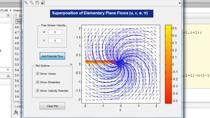Predictive Maintenance of a Heat Exchanger
By implementing a predictive maintenance program on a heat exchanger, process engineers can identify when to modify operations to extend heat exchanger life versus when to take the heat exchanger offline for cleaning. In this session, you will learn how you can use MATLAB® and Simulink® to aid in fouling monitoring and prediction by:
- Building a rigorous first principles model of the heat exchanger with Simscape™
- Building a digital twin of the heat exchanger by tuning the parameters of the model to match field data with Simulink Design Optimization™
- Generating synthetic data from the digital twin to simulate heat exchanger fouling
- Modeling an exponential degradation process for estimating the remaining useful life (RUL) of the heat exchanger with Predictive Maintenance Toolbox™
Published: 21 Nov 2021




